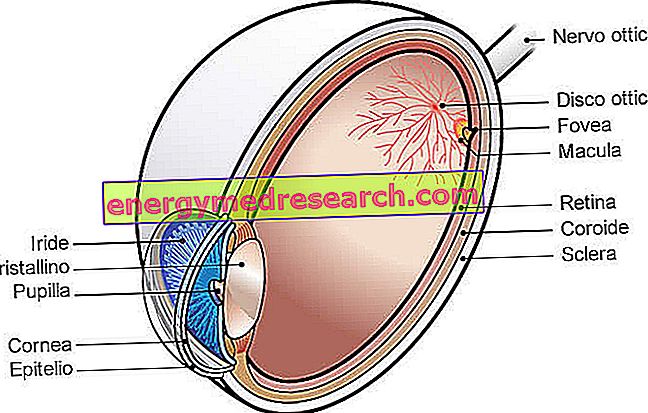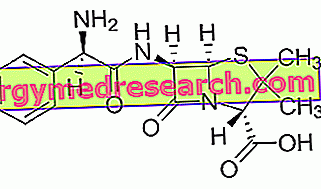Definition
The term "osteoporosis" identifies a pathological condition typical of the senile age and of some diseases, which consists in the progressive rarefaction of the bones; in other words, osteoporosis is responsible for an increase in bone fragility, therefore the risk of fracture increases to the point that a simple cough could cause bone breakage.
Causes
The bone fragility associated with osteoporosis derives from the reduction of the organic component of the bone; among the risk factors, hypoestrogenism stands out, a typical condition of the post-menopausal period (for this reason, osteoporosis is more frequent in women), associated with a drop in body weight, celiac disease, hyperthyroidism, hyperparathyroidism, Graves-Basedow disease, genetic predisposition, sedentary lifestyle and long-term therapy with corticosteroids. For humans, the low amount of testosterone (andropause) could promote osteoporosis.
- Although it is not a form of arthritis, osteoporosis could still cause fractures to cause arthritis.
Symptoms
Many people with osteoporosis do not realize the disease as long as they do not undergo a specific examination or fracture a bone. It is noted that the height of patients affected by osteoporosis tends to decrease, due to the compression of the spine or the curvature of the back, which is particularly pronounced. Osteoporosis can be painful and cause loss of independence to those affected.
Diet and Nutrition
Information on Osteoporosis - Drugs for the Treatment of Osteoporosis is not intended to replace the direct relationship between health professional and patient. Always consult your doctor and / or specialist before taking Osteoporosis - Drugs for the Treatment of Osteoporosis.
drugs
We have seen that the preferred target of osteoporosis is represented by excessively thin women and in the post-menopausal period; Accordingly, it is understandable how bone density analysis and height monitoring, especially for women falling into this category, is useful for early diagnosis. Prevention, in fact, is fundamental: an adequate intake of calcium with the diet (or possible supplementation with calcium supplements), associated with moderate frequent and constant exercise, is essential to prevent the disease.
Pharmacological treatment is possible both as prophylaxis of osteoporosis and as a real cure.
Estrogens : estrogen administration tends to slow down the process of bone degradation associated with osteoporosis. Unfortunately, in menopausal women for over 10 years, taking estrogen for osteoporosis prevention, a tendency towards heart disease and stroke has been observed, which has created doubts about the therapeutic validity of estrogen treatment. Furthermore, long-term estrogen treatment appears to favor the appearance of breast tumors and gallstones.
- Estradiol (eg Climara, Ephelia, Progynova, Vagifem, Estrofem): orally, the recommended dose is 0.5-2 mg, taken once a day. The drug can also be administered transdermally (0.025-0.1 mg / day; 14 mcg / day), applying the patch 1-2 times a week (not on the breast).
Estrogen receptor agonists : by stimulating the estrogen receptor, the drugs belonging to this category act with an estrogenic-like effect on the bone, while not exhibiting any activity at the level of the uterus or breast. They are indicated both as a preventive measure for osteoporosis and as a real cure.
- Raloxifene (eg Raloxifene Teva, Optruma, Evista): it is a pharmacological alternative to estrogen. Treatment with this drug appears to increase bone density. The drug, although it tends to reduce the risk of spinal fractures, does not seem effective in preventing hip fractures. Man can also take this drug to treat osteoporosis. The dosage must be carefully determined by the doctor.
- Lasoxifene (eg Fablyn): take one 500 mcg tablet once a day. If necessary, combine vitamin D and calcium supplements.
- Bazedoxifene (eg. Conbriza): it is recommended to take the drug at a dose of 20 mg (1 tablet), once a day.
Common calcium and vitamin D supplements:
- Calcium Carbonate (eg Idracal, Carbosint, Recal, Metocal, Cacit): for the treatment of osteoporosis, take 2500-7500 mg / day, divided into 2-4 doses. It is the most common preparation ever available in calcium supplements
- Calcium Citrate
- Calcium phosphate
- Vitamin D (eg Long Life Vitamin D, Ditervit K, Xarenel, Tridelta Norm, Dibase)
- Ergo calciferol (eg Vit.D2 Salf, Ostelin)
Bisphosphonates : this class of drugs can also be useful to prevent bone fragility and decalcification in women during menopause; therefore it represents a valid prophylactic therapy for osteoporosis, also used in the treatment of overt disease.
- Alendronate or alendronic acid (eg Fosamax, Alendros): the drug is also available in combination with other active ingredients (eg Fosavance, Alendronate Sodium and colecalciferol, Adrovance: Alendronate sodicao trihydrate + vitamin D3). For the prevention of postmenopausal osteoporosis, it is recommended to take an active dose of 5 mg per day, orally. Men can also take this drug.
- Ibandronic acid (eg. Bonviva, Bondenza): available both as tablets for oral intake (150 mg), and as a solution for injection (3 mg). Indicatively, take 1 tablet a month, in the morning on an empty stomach, before breakfast; alternatively, inject a dose of the drug every three months.
- Ibandronate (eg. Bonviva): it is recommended to take the drug orally, at a dose of 2.5 mg, once a day. The active ingredient can be taken at a dose of 150 mg once a month. Still, alternatively, a dose of 3 mg can be administered (IV bolus injection of 15-30 seconds) every 3 months. Consult your doctor for any clarifications.
- Zoledronic acid (eg. Zometa, Aclasta): for the treatment of osteoporosis, it is recommended to take an active dose of 5 mg by intravenous infusion in 15 minutes once a year. This dosage, related to glucocorticoids, is indicated for both men and women with osteoporosis. The drug is also indicated for the prevention of osteoporosis: an intravenous infusion of 5 mg of active (in 15 minutes) is recommended, every 2 years. If the diet is lacking, calcium and vitamin D supplementation is recommended.
Side effects of bisphosphonates: abdominal pain, difficulty swallowing, irritation of the esophagus, nausea and, more rarely, jaw block caused by poor blood supply.
Osteoporosis: Diagnosis and Therapy
X Go to the Video Page Go to Wellness Destination Watch the video on youtubeParathyroid hormone and analogues
- Parathyroid hormone (eg Preotact): indicated to treat osteoporosis in postmenopausal women: the drug tends to reduce fractures on the spine. It is recommended to take 100 mcg of active once a day, by subcutaneous injection in the abdomen. Continue the treatment for up to 2 years. It is possible to complete therapy with calcium or vitamin D supplementation.
- Teriparatide (eg Forsteo): it is a substance that is partly identical to the parathyroid hormone, which acts by stimulating bone formation directly on the cells used for the synthesis of bone tissue (osteoblasts). It is recommended to take 20 mcg of active, once a day, by injecting under the skin in the stomach or thigh.
If it is not possible to take one of the first-line drugs (bisphosphonates or raloxifene), alternative pharmacological substances can be taken:
- Denosumab (eg. Xgeva, Prolia): in general, this drug is prescribed for the prevention of atherosclerosis in patients with bone cancer. The dosage foresees an administration of 120 mg, by injection in the thigh, in the abdomen or in the arm, once a month. We recommend a simultaneous integration of calcium or vitamin D.
- Salmon Calcitonin (eg Calcitonina Sandoz Spray, Biocalcin): it is a substance synthesized by the thyroid gland, able to decrease bone resorption, slowing down bone breakdown. Generally administered as a nasal spray, it can cause irritation of the nasal mucosa. Treatment with calcitonin is the least indicated for the treatment of osteoporosis.



